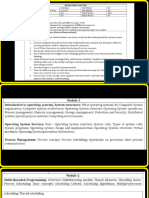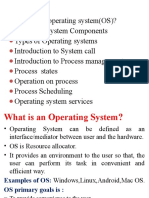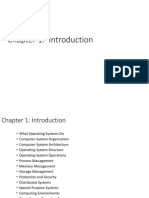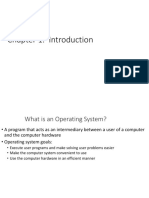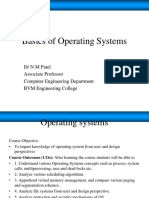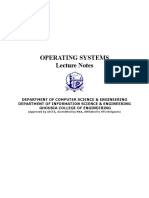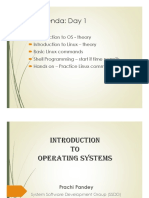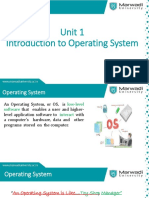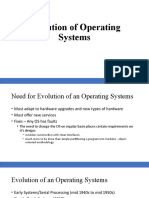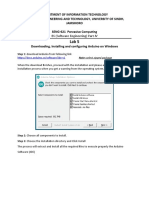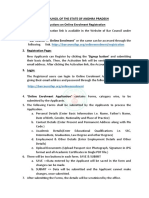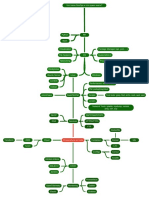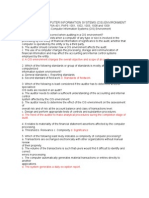0% found this document useful (0 votes)
153 views44 pagesOS Introduction - Part 2
The document discusses various concepts related to operating systems including:
- The objectives of operating systems are to provide convenience, efficiency, and ability to evolve.
- Uni-programming allows only one task in memory at a time, while multi-programming allows more than one process in memory simultaneously.
- Multi-tasking performs multiple tasks concurrently through multi-programming.
- Time-sharing enables multiple users to share computer resources simultaneously.
- Multi-processing uses multiple CPUs to execute multiple processes in parallel.
Uploaded by
21PC12 - GOKUL DCopyright
© © All Rights Reserved
We take content rights seriously. If you suspect this is your content, claim it here.
Available Formats
Download as PPTX, PDF, TXT or read online on Scribd
0% found this document useful (0 votes)
153 views44 pagesOS Introduction - Part 2
The document discusses various concepts related to operating systems including:
- The objectives of operating systems are to provide convenience, efficiency, and ability to evolve.
- Uni-programming allows only one task in memory at a time, while multi-programming allows more than one process in memory simultaneously.
- Multi-tasking performs multiple tasks concurrently through multi-programming.
- Time-sharing enables multiple users to share computer resources simultaneously.
- Multi-processing uses multiple CPUs to execute multiple processes in parallel.
Uploaded by
21PC12 - GOKUL DCopyright
© © All Rights Reserved
We take content rights seriously. If you suspect this is your content, claim it here.
Available Formats
Download as PPTX, PDF, TXT or read online on Scribd
/ 44


















